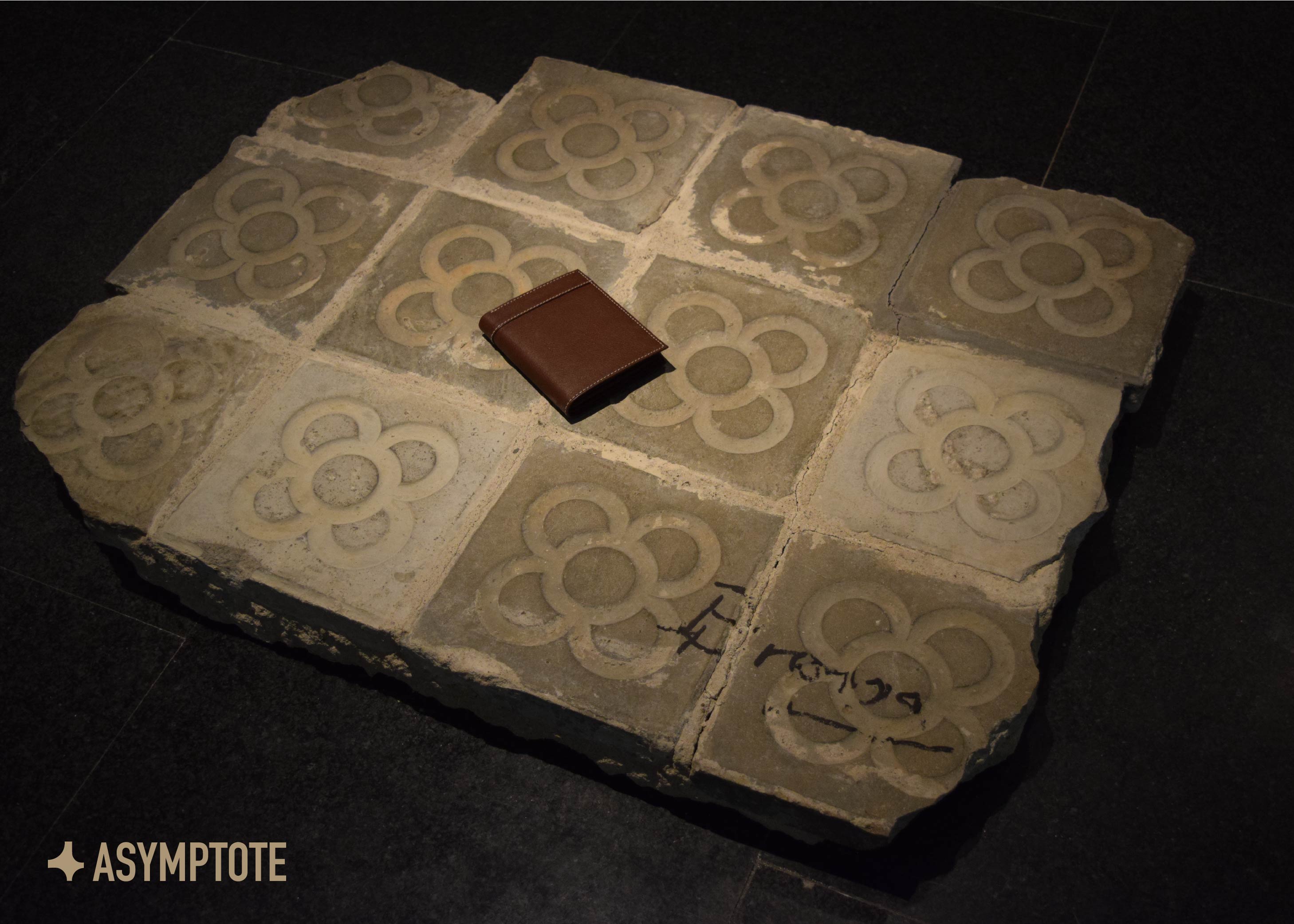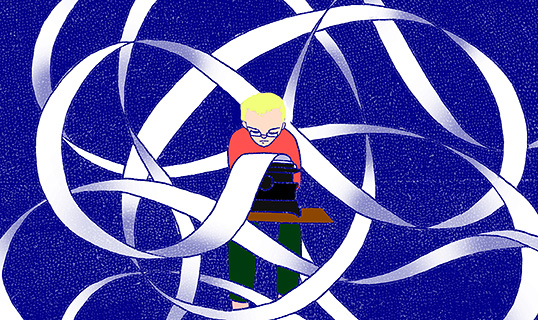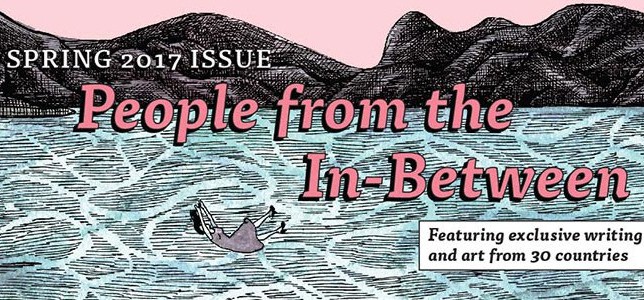On May 25, 1970, Joan Brossa (Barcelona, 1919–1998) spoke out at the first Festival of Catalan Poetry at the Price Theatre, Barcelona, in solidarity with the political prisoners under Franco’s dictatorship. Just a few months ago, in November 2017, the Catalan president controversially announced that in the context of the referendum for independence held in Catalonia, Spain once again had political prisoners. Captured on film by Pere Portabella in a clandestine documentary, fragments of the poems recited by Joan Brossa and other renowned names in Catalan literature are now being shown at the Barcelona Museum of Contemporary Art (MACBA). For an artist, political activist and Catalan nationalist, this intriguing exhibition that offers a new reading of Brossa’s complete works could not be more timely.
Language: Catalan
An Inventory of Resistance: Notes on Catalan Language Politics in Literature
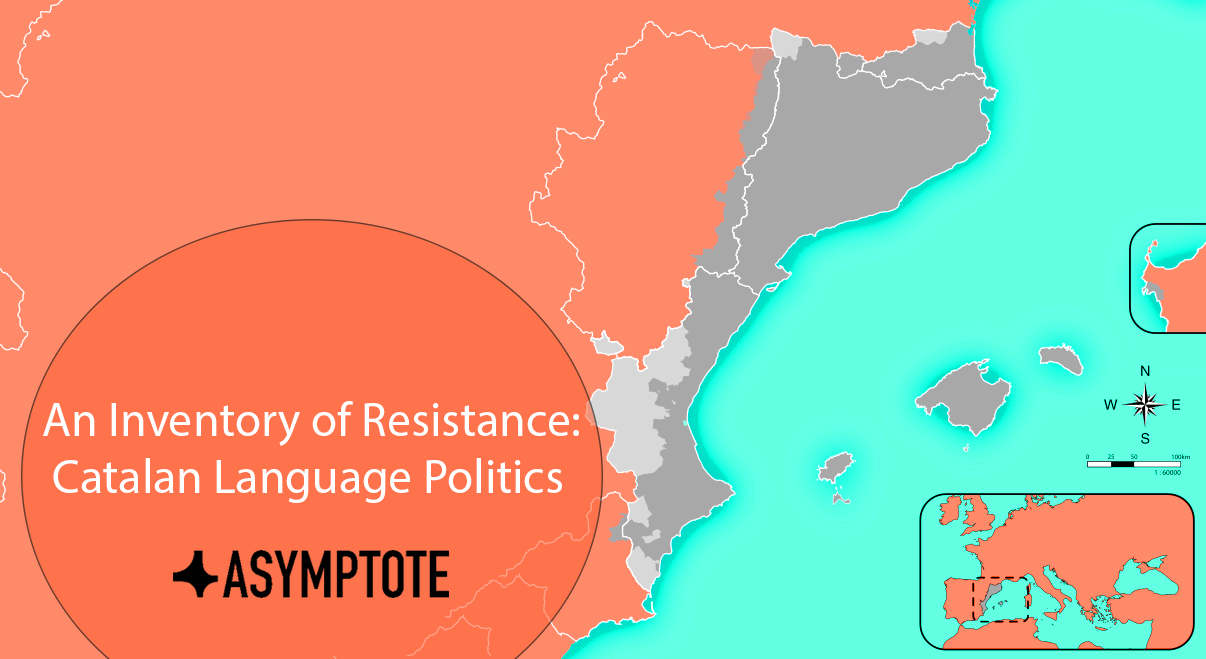
Perhaps part of the uniqueness of Catalan comes from this awareness of its influence on and disconnection from Castilian and European traditions.
Part I: The Nineteenth Century
At first, I was hesitant to write an article on the uses of the Catalan language in literature throughout recent history. After the referendum for Catalan independence held this past October 1, which was deemed illegal by the Spanish government, and the subsequent episodes of violence that occurred in the region, the topic has come to be a sensitive matter for any national. However, where there is a language, there is a literature, and the history of Catalan is one of stubborn resistance. It is my contention that the history of a language is somehow lived out in those who speak it, insofar as a sentiment of ambiguity still informs contemporary critical debates on the usefulness and adaptability of Catalan literature. “Is Catalan literature diverse enough? Can it cultivate all genres? Is it economically viable?” are questions that have resonated among critics and the public alike. Catalan literature inherits a sense of shame from its own fruition, and it is this feeling that I want to explore with this genealogy of usages.
This is not a history of Catalan literature and the texts featured here have not been selected according to an aesthetic canon. This is an archive of perceptions of Catalan language and literature as experienced throughout the nineteenth and twentieth centuries, from the literary resurgence known as La Renaixença in Catalan literary history (parallel to which political Catalan nationalism as we know it unfolds) to the relatively normalized literary field in existence today. While certainly not the only appropriate approach, in what follows I present a succession of events from the nineteenth century that Catalan historiography has employed to explain the evolution of the uses of the language.
Translation Tuesday: Excerpt from “The Garden of Seven Twilights” by Miquel de Palol
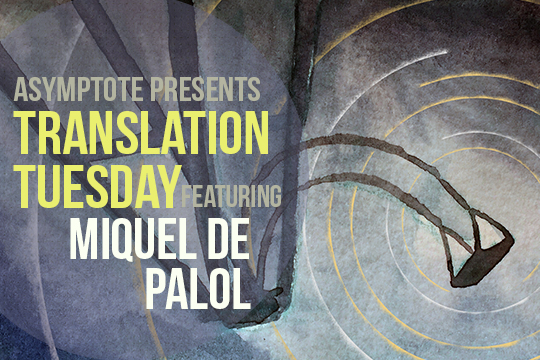
I grew aware of the immense distances spread out in front of me, breathing for me.
“When I read Miquel de Palol,” says Mireira Vidal-Conte, “I see reflections of such authors as Claudio Magris, Robert Walser, Cortázar, Ray Bradbury, Clarice Lispector, Stendhal, Szymborska, Casares, Karel Čapek, Pessoa, Proust, Flaubert, or Novalis; but also of painters like Brueghel the Elder (the first of many predecessors of the surrealism of the detail) or the cinema of David Lynch, Fellini, or Wong Kar-wai. This is true irrespective of the genre, for the poet under discussion works not in a specific genre (save for that of language), but in the broader category of art. As a literary artist, he employs genre in the manner of a simple tool, employing the one that works or those occasions when it works. He is a poet when poetry is what is called for.” For this Translation Tuesday, we present an excerpt from The Garden of Seven Twilights, in which the great Miquel de Palol touches the real in all its vertiginous vastness in childhood moments spent face to face with the cosmos. This piece was first published last Thursday along with new work from thirty-one countries in our Fall 2017 issue.
—Lee Yew Leong, Editor-in-Chief
The Story of the Swing and the Stars
My American childhood, super-protected, closed in on itself, took place between Long Island and New England: Providence, Boston, Salem . . . Now they seem to me like places from a dream. My godfather Kaspar had a house on the outskirts of Boston, and I stayed there for long stretches in the summer, until my mother died.
There was a swing between two apple trees in the garden behind the house, but from a very young age, I preferred to kill time staring at the cockroaches and butterflies.
Weekly Dispatches from the Frontlines of World Literature

Music, art and linguistics have been knocking on literature's door around the world this week. Asymptote members bring you the scoop.
Literature is interdisciplinary by nature, and the world showed us how this week. From visual art exhibitions and a reading of the Universal Declaration of Human Rights in Hong Kong to a music festival infiltrated by writers in Slovakia and a commemoration of the late sociolinguist Jesús Tuson in Catalan, there is much to catch up on the literary world’s doings this week.
Hong Kong Editor-at-Large Charlie Ng Chak-Kwan brings us up to speed:
Themed “Fictional Happiness,” the third edition of Hong Kong Literary Season ran from June to late August. The annual event is organised by one of the most important Hong Kong literary organisations, the House of Hong Kong literature. This year the event featured an opening talk by Hong Kong novelist Dung Kai-cheung and Taiwanese writer Luo Yijun, a writing competition, an interdisciplinary visual arts exhibition, and a series of talks, workshops and film screenings. Five visual artists were invited to create installations inspired by five important works of Hong Kong fiction in response to the exhibition title, “Fictional Reality: Literature, Visual Arts, and the Remaking of Hong Kong History.”
Interdisciplinary collaboration has been a hot trend in the Hong Kong literary scene recently. Led and curated by visual artist Angela Su, Dark Fluid: a Science Fiction Experiment, is the latest collection of sci-fi short stories written by seven Hong Kong artists and writers. The book launch on September 2 took place at the base of Hong Kong arts organisation, “Things that Can Happen,” in Sham Shui Po. The experimental project was initiated as an artistic effort to reflect on recent social turmoils through scientific imagination and dystopian visions. The book launch also presented a dramatic audio adaptation of one of the stories, “Epidemic Investigation,” from the collection.
On September 6, PEN Hong Kong hosted a bilingual reading session (Cantonese and English) as part of the International Literature Festival Berlin (ILB) at Art and Culture Outreach (ACO) in Wan Chai. About twelve Hong Kong writers, journalists, and academics participated in “The Worldwide Reading of the Universal Declaration of Human Rights” by reading excerpts of their choice from works that deal with issues of human rights.
Amid the literary and artistic attention to Hong Kong social issues and history, local literary magazine, Fleur de Lettre, will take readers on a literary sketching day-trip in Ma On Shan on September 9. During the event named “August and On Shan,” participants will visit a former iron mine in Ma On Shan to imagine its industrial past through folk tales and historical relics. READ MORE…
Juxtapositions are rife in Intan Paramaditha’s enchanting story, “Visiting a Haunted House,” translated from the Indonesian by Stephen Epstein. To me it read almost like an incantation, the words constantly looping memory upon the story’s present. As a granddaughter visits her dead grandmother’s house, she paints a pointillist picture of her grandmother’s life, whose colors soon run into her own. A broken red lipstick, a cloudy mirror, vanished smells of Gudang Garam cigarettes—the world spins, and so do familial memories, ancestral souvenirs, and time.
The granddaughter is an eternal migrant, “dashing around in bus terminals and airports with a backpack.” She remembers how her grandmother had always wanted to go abroad but contented herself with the thrill of riding a minibus to market while dressed in a flowery cotton dress. The story is ostensibly a simple tale of returning to an ancestral home. But the narrator’s voice soon bifurcates like a snake’s tongue, each sentence describing the grandmother and the granddaughter both. When speaking of a kuntilanak, “a woman no longer here, in our world, but not ‘over there’ either,” is she describing the ghost, or herself?
Translation Tuesday: An excerpt of “Miss Keaton and Other Beasts” by Teresa Colom
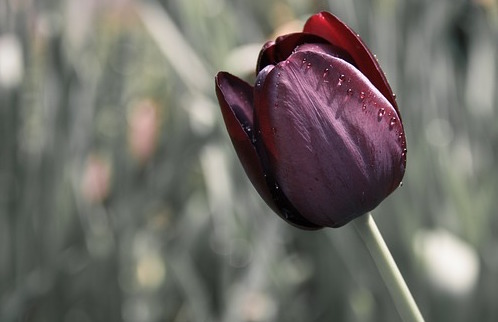
"Death had been tempted by the idea of being a mother for centuries."
Death can arrive at any moment and for one anonymous woman it came when she’d been gestating a fetus for six months. Her shrouded body ended up tossed into a mass grave in a random cemetery. As a compassionate priest devoted a few words to her out of the goodness of his heart, the gravedigger covered her body with dirt. No one claimed or identified the cadaver, and the few folks who noticed her obvious pregnancy assumed that the baby had died along with its mother.
However that wasn’t the case. The fetus continued to nourish itself on her inert body and, just as blackness was about to envelop its incipient existence, the only power able to change its inevitable fate intervened. Death. Death itself, whose job was to carry off designated souls without a second thought, fixed her eye on that small creature. READ MORE…
My 2015 as a BTBA Judge, and Reading Resolutions for 2016
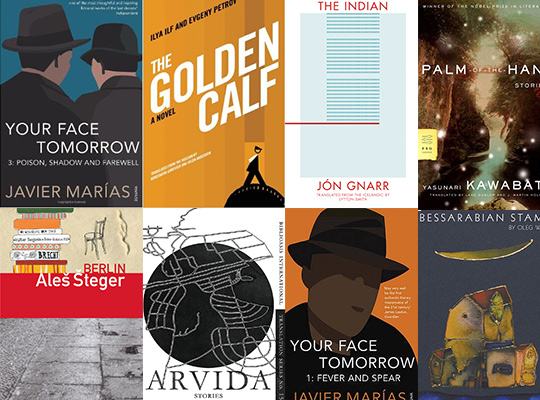
Asked to review my year in reading and from it form reading resolutions, my immediate response is something I need to call an excited sigh.
Asked to review my year in reading and from it form reading resolutions, my immediate response is something I need to call an excited sigh. For months now, as a judge for the Best Translated Book Award, all I’ve read are eligible books, books published in the US translated for the first time this year. Yet, there were a few months before that reading took over. For years now, I’ve taken pleasure in not being partway through any books when the new year begins, so as to open each year fresh. This year, Ilya Ilf and Evgeny Petrov’s The Golden Calf (trans. Helen Anderson and Konstantin Gurevich) made for a great New Year’s Day read. (To call it fitting, however, would be a lie.) The novel is hysterical, absurd, and clever, fueled by ambitious and clueless characters, fleeing and bumbling in pursuit of fortune.
Taking advantage of a bitter winter, I read the Your Face Tomorrow trilogy from Javier Marias (trans. Margaret Jull Costa). It is rare for a project so vast to also be unflagging in both its entertainment and ability to find new shades and twists for its ideas: of cultural memories, of what it is to read another human being, of violence and intimacy. But this trilogy accomplishes it. From it alone, I could pluck a number of examples of one of my favorite narrative tricks: to make a scene continue endlessly through digression after digression. Unlike any other art form, the novel is thus able to manipulate the experience of time, both of the readers’ and the characters’.
But yes, this year has been a culmination of reading more and more books the year they’re published. The best way I can think about it is by describing the books that stand out in little, meaningful ways. Starting with where I live, in Vermont, so close to Montreal, Quebec literature has had much of my affection this year. Not just the translations, like the Raymond Bock and Samuel Archibald story collections Atavisms (trans. Pablo Strauss) and Arvida (trans. Donald Winkler)—so similar in their arc as collections and interest in familial depths but with different approaches and destinations—but also classics like the narratively unsettled Kamouraska (trans. Norman Shapiro). Anne Hébert’s novel is as much a story of a women trapped by culture and time, and her murder plot, as it is a stylistic achievement, melding aesthetic with the narrator’s psychology. READ MORE…
Translation Tuesday: from All that Died Among the Bicycles that Day by Llucia Ramis
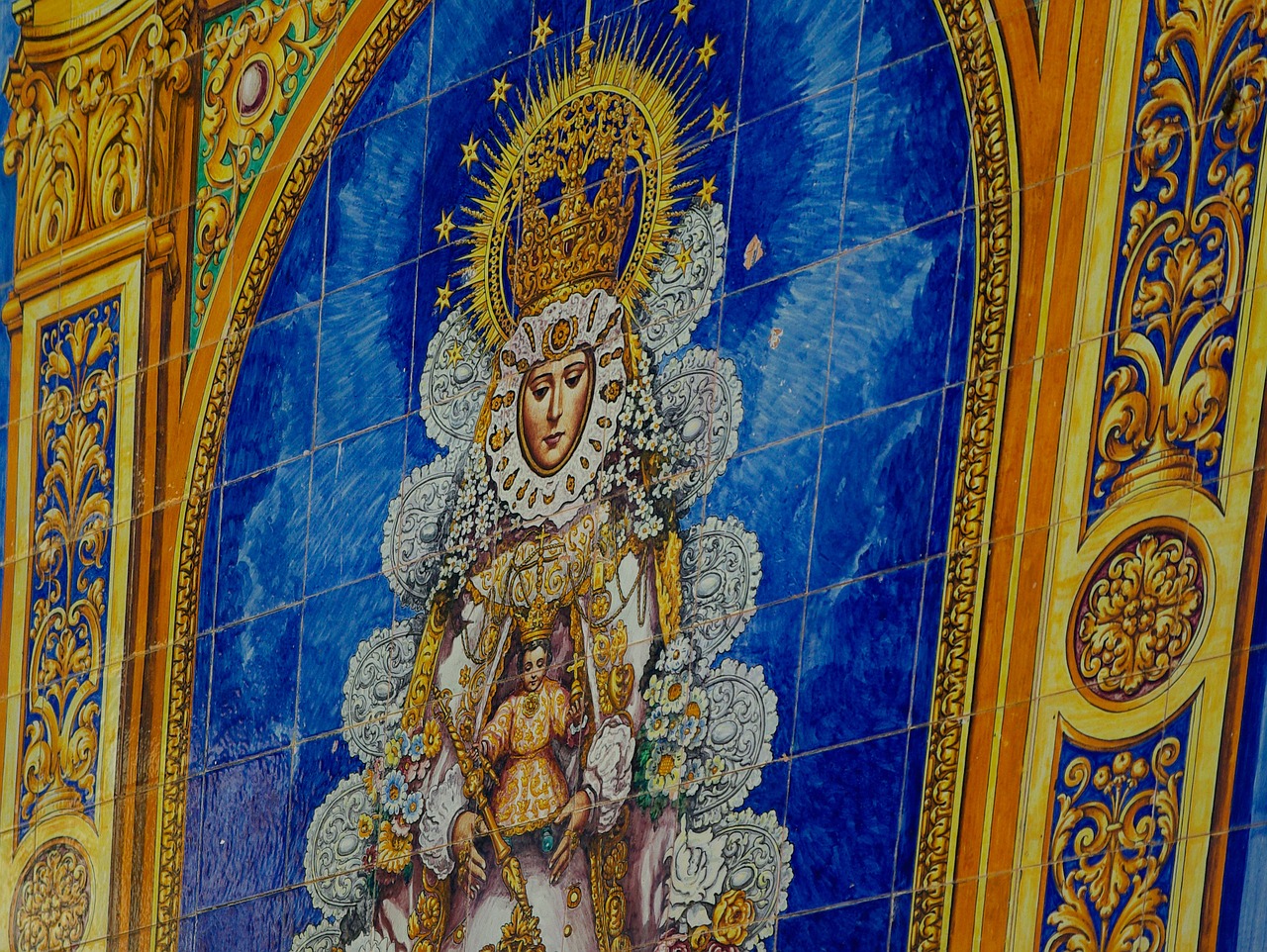
We’ve been looking at black and white photos of places that no longer exist and of children who are no longer children.
This isn’t autobiography.
All the World’s Men
Every Thursday, my father has lunch with la abuela at her house in Palma.
We bought a roast chicken and la abuela explained that they’d been feeding them fishmeal for a while now. That’s why they tasted that way, and why the eggs tasted fishy, too. And years before that they would deliver live chickens straight from the farm, from Felanitx.
Once, one of her children told la abuela about another animal in the basket, but she didn’t pay it any mind. She left the large crate in the walkway for two days until the stench became unbearable. Only then did she go look, and sure enough, there alongside the chicken was a dead rabbit swarmed by flies. They delivered them dead like that because if not, they’d piss all over. The household maintained a certain aversion to rabbits from that day on.
“Not only that, but you also had to boil it to make sure it was still good. Back then you boiled everything just in case,” my father said.
“In those days, entonses, they said it wasn’t good to eat the chicken skin, it’d give you some kind of sickness, a terrible stomachache or something like that,” la abuela explained.
And my father says: “They’d say you’d turn into a maricón.” READ MORE…

